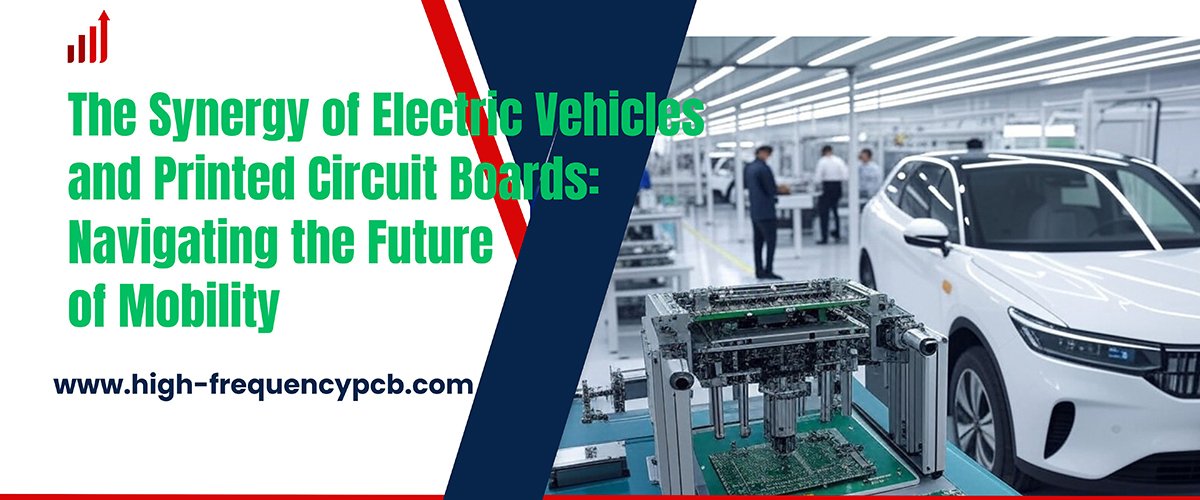The Synergy of Electric Vehicles and Printed Circuit Boards Navigating the Future of Mobility

The EV Industry and the Essential Role of PCBs
The Electric Vehicle (EV) Industry is rapidly evolving as the world transitions towards more sustainable transportation solutions. With governments, businesses, and consumers all leaning into green technology, the EV market has seen exponential growth. However, alongside this growth, there's another crucial industry that supports the advancement of electric vehicles — the Printed Circuit Board (PCB) Industry.
PCBs play a pivotal role in ensuring the smooth operation of EVs. From the vehicle's battery management system (BMS) to the motor control unit (MCU), PCBs are embedded in nearly every critical component of an EV. This article explores the relationship between the EV industry and the PCB industry, highlighting the growing demand for specialized PCBs in the EV sector.
What Are PCBs, and Why Are They Important?
Printed Circuit Boards (PCBs) are essential components used in nearly all electronic devices. They provide a platform for connecting electrical components, enabling them to function efficiently and reliably. A PCB typically consists of layers of copper circuitry, a substrate, and a protective layer. The complexity and design of PCBs vary based on the application.
In the EV industry, PCBs are used in a range of applications, from the electric motor and battery systems to advanced driver-assistance systems (ADAS) and infotainment units. As EVs become more technologically advanced, the demand for high-performance, durable, and compact PCBs is increasing.
The Role of PCBs in the EV Industry
As electric vehicles incorporate more sophisticated electronics, the role of PCBs becomes even more critical. Below are some key areas where PCBs are indispensable in EVs:
- Battery Management Systems (BMS)
-
The BMS is the brain of the EV’s battery pack, responsible for monitoring the health and performance of individual cells. PCBs are used in the BMS to track voltage, temperature, and charge levels, ensuring the battery operates safely and efficiently.
- Motor Control Units (MCUs)
-
PCBs are used in motor control units to manage the electric motor’s performance, including speed and torque control. These boards need to be robust, as they are subjected to high power demands and environmental factors.
- Charging Systems
-
PCBs are crucial in charging systems, including onboard chargers and power electronics. They help manage the flow of electricity from the charging station to the vehicle’s battery, ensuring safe and efficient charging.
- Advanced Driver Assistance Systems (ADAS)
-
EVs are increasingly equipped with ADAS features such as collision avoidance, lane-keeping, and adaptive cruise control. PCBs are used in the sensors, radar, and cameras that power these systems, which require high-density, high-performance PCBs.
- Infotainment and Connectivity
-
With EVs becoming more connected and automated, PCBs play a key role in the vehicle’s infotainment system, GPS, communication, and entertainment features. These systems rely on advanced PCBs for seamless performance.
- Power Distribution Units (PDU)
-
In electric vehicles, the PDU is responsible for distributing electrical power throughout the vehicle. PCBs in PDUs manage power flow from the battery to various vehicle components, ensuring that each system gets the appropriate amount of power.
Challenges of PCBs in the EV Industry
While PCBs are essential to the functionality of EVs, their use in electric vehicles presents several challenges:
-
Thermal Management: EVs generate significant heat, especially in high-power applications such as motor control and charging systems. PCBs need to be designed to handle high temperatures and dissipate heat efficiently.
-
Miniaturization and Complexity: As EVs incorporate more features, PCBs need to become smaller and more complex. This requires advanced manufacturing techniques and materials.
-
Reliability: EVs are subjected to harsh environments, including vibrations, temperature extremes, and moisture. PCBs must be durable enough to withstand these conditions and ensure the vehicle's longevity.
-
Cost: The demand for high-quality, high-performance PCBs can increase costs. Manufacturers need to balance quality with cost-effectiveness to keep EVs affordable.
Comparison of PCB Needs in Traditional Vehicles vs. Electric Vehicles
The following table compares the PCB requirements of traditional internal combustion engine (ICE) vehicles with electric vehicles:
|
Aspect |
Traditional Vehicles (ICE) |
Electric Vehicles (EV) |
|
Powertrain |
ICE, mechanical systems |
Electric motor, battery pack, and power electronics |
|
PCB Complexity |
Moderate, limited to powertrain and infotainment |
High, including motor control, BMS, charging, ADAS, etc. |
|
Thermal Demands |
Standard temperature management |
High, especially in motor control and battery systems |
|
Size and Space |
Limited electronic components |
High-density and compact PCBs due to more electronics |
|
Durability |
Less stringent, typical operating conditions |
High durability required for extreme conditions (vibration, temperature) |
|
Battery Management |
Not applicable |
Critical to monitor and balance battery cells |
|
Advanced Electronics |
Limited to infotainment and control systems |
Extensive, including ADAS, charging systems, and motor controls |
|
Power Distribution |
Standard DC circuits |
Advanced power electronics for distribution from battery to components |
The rise of electric vehicles is fundamentally changing the automotive industry, and the PCB industry plays an integral role in supporting this transformation. As EVs become more sophisticated, the demand for high-performance, durable, and compact PCBs will continue to rise. Manufacturers must invest in advanced PCB technology to meet the specific needs of the EV sector, from thermal management to miniaturization.
The future of electric vehicles will rely heavily on the evolution of PCB technology, making it one of the most critical components in the quest for more efficient, reliable, and eco-friendly transportation.
 Microwave PCBs: The Backbone o
Microwave PCBs: The Backbone o
 The Synergy of Electric Vehicl
The Synergy of Electric Vehicl
 Emerging Trends in PCB Prototy
Emerging Trends in PCB Prototy
 Recent Trends and Developments
Recent Trends and Developments
